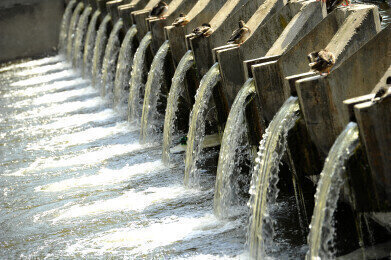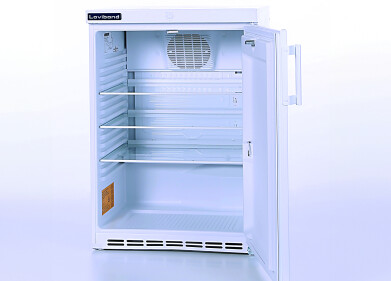Drinking water
COP28: What is the future of desalination?
Dec 15 2023
Just ten days before COP28 opened its doors to the world’s elite in Dubai, the United Nations Environment Programme (UNEP) published its annual Emissions Gap Report, which delineates the difference between emissions adequate to limiting warming below 1.5°C or 2°C by 2100 and emissions permitted under current global commitments. We never get good marks. Last year, for instance, the report forecasted 2.8°C by the end of the century. This time around, it’s 2.9°C. If we want to stay around 2°C, we’ll need to reduce forecasted emissions for 2030 by 28%; if we’d like to hit our target of 1.5°C, the figure rises to 42%.
At COP27, after that year’s report estimated 2.8°C of warming by 2100, the United Nations’ Secretary-General António Guterres – the UN’s highest authority – addressed the Conference, spelling out his view that: “We are on a highway to climate hell with our foot on the accelerator.” Having accelerated by yet another 0.1°C since that doomsday prophesy, COP28 has some big questions to answer. Most pressing is whether or not it will be the first Conference of the Parties to declare an end to fossil fuels. But whilst the delegates fight that out, a technology indispensable to meeting one of the greatest challenges in adapting to our new climate is getting a little more attention that it has previously.
It’s not a great exaggeration to say that all the deprivation wrought by global warming will be the after-effect of its assault on drinking water. When global average temperatures rise, dust bowls spring up all along the equator as rates of evaporation accelerate, seas contaminate freshwaters as they creep further inland, and glaciers, like the Tibetan Plateau on which a quarter of the Earth’s population depend, become puddles. If we’ve delayed meaningful reform for too long and now face a far warmer future than we’d hoped, it’s likely that the world’s oceans will become a significant source of drinking water in the 21st century, requiring rapid development of our desalination capacities.
It seems both the organisers of and delegates to COP28 got this memo. In an exemplary show of commitment, the Marshall Islands presented a $35 billion adaptation plan at COP28, revealing the stark realities of climate injustices. Despite contributing less than 0.01% of global greenhouse-gas emissions, the Marshall Islands find themselves on the frontline of climate change effects. With most of the country just 6 feet above sea level, and projections indicating a 2 feet rise in sea levels by 2070, the reality of inundated urban centers and uninhabitable islands looms large. This plan, essential for saving lives, preserving an Indigenous culture, and mitigating regular flooding and food insecurity, underscores the urgent need for global cooperation, particularly from affluent economies like the US and the EU.
As nations grapple with these challenges, the European Investment Bank (EIB) steps up, announcing an additional EUR 100 million investment for the Aqaba Amman Desalination and Water Conveyance project in Jordan, one of the most water-scarce countries in the world. This project, vital for climate change adaptation, will desalinate water from the Red Sea and transport it to Amman and other towns. This additional funding, following EUR 200 million signed in December 2022, highlights the growing importance and urgency of sustainable water solutions.
Meanwhile, Abu Dhabi, a region already pioneering in water solutions, has taken significant steps to address water scarcity through advanced desalination facilities. With a panel discussion at COP28 titled "Addressing Water Scarcity through Desalination and Reuse," experts convened to discuss desalination and water reuse strategies to combat water scarcity and climate change pressures. This event preludes the International Desalination and Reuse (IDRA) World Congress in December 2024, emphasizing Abu Dhabi's commitment to excellence in water solutions.
Furthermore, ENGIE, a global leader in low-carbon energy and services, launched its Desalination Center of Excellence at COP28, aligning with the conference's 'Food, Agriculture, and Water' thematic day. This initiative, aimed at securing sustainable water for future generations, highlights ENGIE's more than three-decade expertise in desalination and potable water solutions. With the Center's focus on addressing desalination market needs, energy efficiency, and environmental impacts, ENGIE strengthens its position as a key player in the global fight against water scarcity.
As COP28 unfolds, these developments represent a collective acknowledgment of the critical role desalination and sustainable water solutions play in our fight against climate change. They underscore the need for continued investment, innovation, and international collaboration to ensure water security for all in an increasingly water-scarce world.
Digital Edition
IET 35.2 March
April 2025
Air Monitoring - Probe Sampling in Hazardous Areas Under Extreme Conditions - New, Game-Changing Sensor for Methane Emissions - Blue Sky Thinking: a 50-year Retrospective on Technological Prog...
View all digital editions
Events
Apr 21 2025 Shanghai, China
Apr 22 2025 Hammamet, Tunisia
Apr 22 2025 Kintex, South Korea
Analytica Anacon India & IndiaLabExpo
Apr 23 2025 Mumbai, India
Apr 23 2025 Moscow, Russia



















